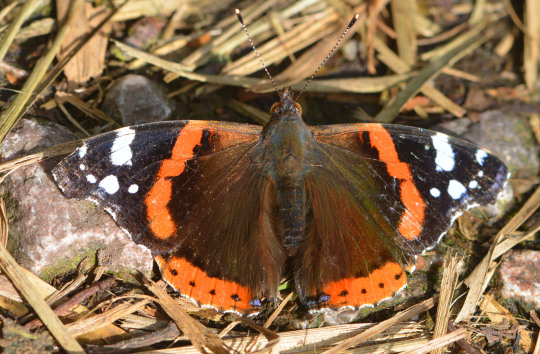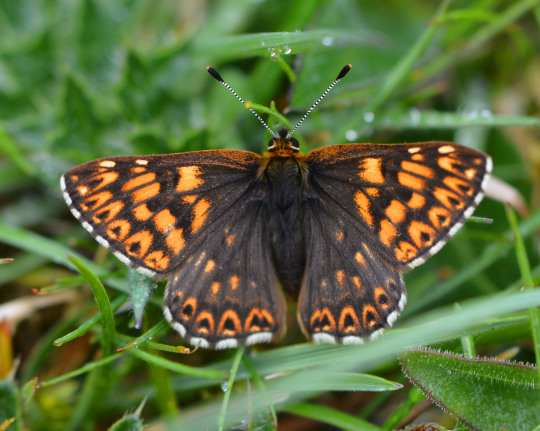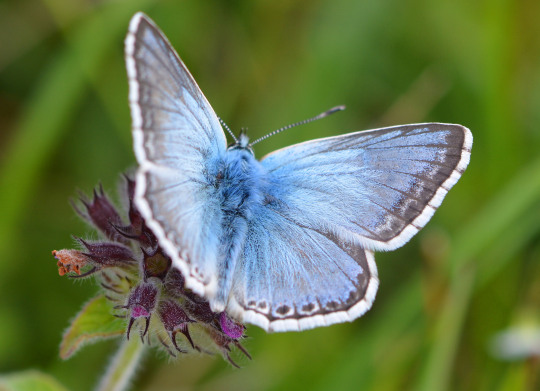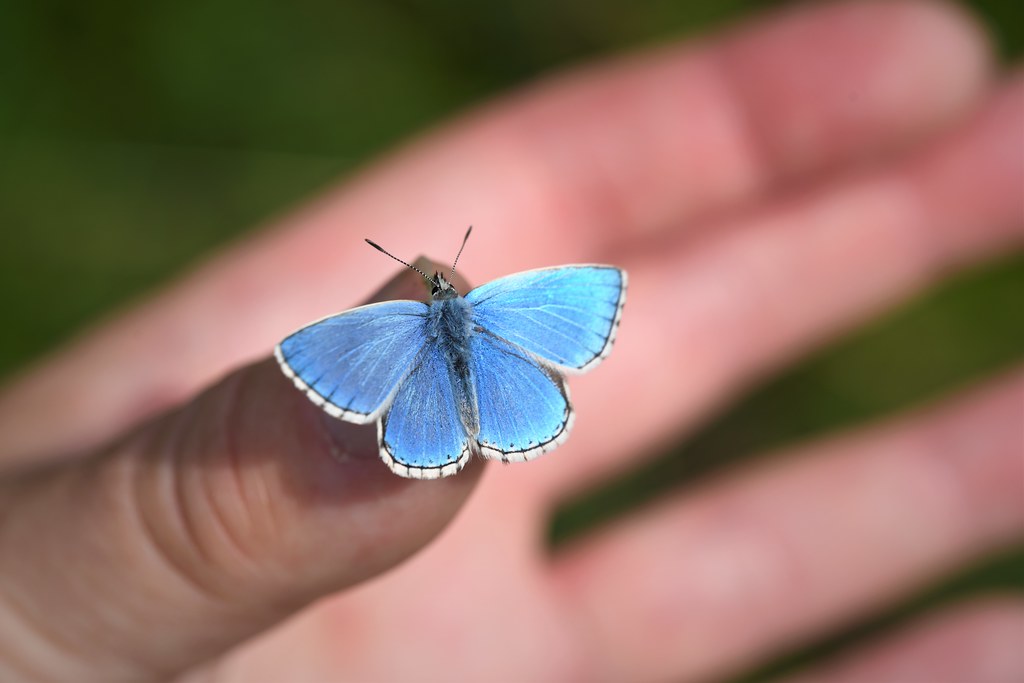#Dorset Lepidoptera
Video
Adonis Blue (Polyommatus bellargus) taking a sweaty drink... by Will Atkins
Via Flickr:
As I was trying to get a photo of it on some marjoram this male decided to make life a little harder for me by landing on my thumb instead!
#Adonis Blue#Adonis Blue Butterfly#Polyommatus#Polyommatus bellargus#Blue Butterfly#Blue Butterflies#Lycaenidae#Wildlife#Wildlife of Europe#European Wildlife#Animal#Nature#insect#Insects#Insects of Europe#Insects of Britain#Lepidoptera#Lepidoptera of Europe#UK Lepidoptera#Dorset Lepidoptera#British Lepidoptera#butterflies and moths#Butterflies#Butterfly#butterflies of Europe#UK butterflies#Dorset butterflies#butterflies of Dorset#Purbeck wildlife#close up
10 notes
·
View notes
Text
My Great British Wild Year: Part 2 of 5-Butterflies and moths
I had one of my greatest ever years of watching butterflies seeing forty seven species my highest ever amount in a year with many special ones. It began with a Brimstone in Winchester in March, then soon followed my first Red Admiral of the year, the species that went on to be a phenomenon with enormous amounts around this year which I enjoyed so much. Into April and I saw Peacock and Speckled Wood, and during the Scotland trip a Small Tortoiseshell. My heart swelled seeing Orange Tip when back with Small White, Comma and Holly Blue soon seen, the essence of spring. Then came our first specialist butterfly search of the year, our annual visit to Noar Hill on May’s first day where we were amazed again to see the gem Duke of Burgundy. Green-veined Whites came into my year well that week a key species for me this year. Martin Down magic was next with Small Copper one I saw so many times this year, Dingy Skipper, Grizzled Skipper and Green Hairstreak exuberant species seen in its glorious grassland, followed by warm and luminous Pearl-bordered Fritillaries at Bentley Wood. Butterflies thrived at my patch Lakeside Country Park with Small Copper, my first Small Heath and Common Blue of the year and mesmerising moments watching a dainty favourite of mine Brown Argus a star here and elsewhere throughout the season this year. Marvellous Marsh Fritillary was perhaps May’s standout, excitingly seen at Magdalen Hill for the first time ever for me and at hotspot where we’re more used to seeing them Martin Down. Small Blue, Large White and iconic Painted Lady coming into my year on that lepidoptera epic at Magdalen Hill. Back at Martin Down towards the end of May I was thrilled to see another mega of my year, the electrifying Adonis Blue.

Red Admiral later in the year at Winnall Moors in October

The beautiful Duke of Burgundy
Then came summer, heralded by Large Skipper and Meadow Brown arriving on patch and elsewhere, effervescent species. We saw Small Pearl-bordered Fritillary at Bentley Wood a week before our week in Anglesey, where a Welsh week of wonder in the extremely hot days brought many fantastic butterflies. The Range, South Stacks’s super Silver-studded Blues a New Forest highlight later in the year too and Ringlet, Dark Green Fritillary and Small Skipper across the week furthering my surge into summer and amazingly an early Common Grayling on the Great Orme probably the unique to it Hipparchia semele sub species an exciting moment with one of my favourites which was also a New Forest highlight later on. Summer was in full swing when we arrived back to Hampshire with marvellous Marbled White the epitome of summer seen and a fantastic Essex Skipper at Hayling Island pivotal to my year. Then the dizzy days of summer emerged, defined by big butterfly trips for us. Firstly coastal Durlston where there were clouds of a mini Dorset delight over the flower rich meadows, astonishing Lulworth Skippers a gorgeous species I never tire of seeing seen in huge volumes. Alongside other of the summer species that day we saw our first Gatekeepers of the year notably early, the early emergence not confined to here as I found in the coming days and weeks. In early July came our Knepp pilgrimage where we were treated to superb views of regal Purple Emperors, as well as White Admiral, our first stunning Silver-washed Fritillaries of the year and a precious White-letter Hairstreak. Also enjoyed that day were fine views of Purple Hairstreak, and in the week before and for many weeks after Knepp I was spellbound by watching these oak top dancers at Lakeside so many times getting wonderful views. Once again a key thread in my butterfly and Lakeside year seeing this monumental species so close to home.

Gatekeeper at Lakeside
Perhaps the ultimate moment of my sensational butterfly year was the dream realised on a weekend trip to Norfolk to see the Bee-eaters when at Hickling Broad our first ever Swallowtail flew past us. An exceptionally beautiful, intricately marked and pure giant butterfly that I had wanted to see for years, one of the great exhilarating moments of my year. Summer’s crown followed later in July, our first glimpses this year of sophisticated Chalkhill Blues at Stockbridge Down. At the end of July I had an extraordinary day around the Hampshire/Wiltshire border at Shipton Bellinger getting swashbuckling intimate views of eye-catching Brown Hairstreak a top species, our first Wall Brown of the year and at Perham Down seeing early for us appealing and exquisite Silver-spotted Skipper to confirm my year list as my highest ever. I saw the aforementioned four well multiple times. From late July to early August I was addicted to watching a group of butterflies from Meadow Brown to Holly Blue including the likes of Speckled Wood, Gatekeeper, Peacock, Painted Lady and Ringlet as I enjoyed carrying out so many Big Butterfly Counts again. In early September for species came the fabulous finishing touch of my butterfly year as we were enthralled watching a sun kissed mystical Clouded Yellow sail from flower to flower at Old Winchester Hill’s rich meadow. I excitedly saw another Clouded Yellow out the front in October in a strong run of seeing many butterflies of a few species late in the year.

The Old Winchester Hill Clouded Yellow

A Chalkhill Blue at Stockbridge Down
In one of my greatest moth years I had a stellar one for day flying moths with a wealth of Six-spot Burnets in the summer I enjoyed seeing them so much, my first ever Forester, Mother Shipton, splendid spring Speckled Yellow moths at Bentley Wood, Silver Y, gorgeous Mint moths, Pyrausta nigrata, amazing moments seeing Scarlet and Jersey Tiger moths on lunch breaks and sensational coastal views of mesmerising Hummingbird Hawk-moths at Durlston and South Stack. Other highlights of a year I saw more moths than ever and focused on them more in moth traps, coming in the house and daytime encounters were; majestic Willow Beauty, many Square-spot Rustics, Vine’s Rustic, Light Emerald, Treble-bar, Setaceous Hebrew Character, Brimstone Moth, Shuttle-shaped Dart, Brown Silver-line, Garden Carpet and impressive Large Yellow Underwing and Lesser Broad-bordered Yellow Underwing.

A Willow Beauty at home in late August

A Brown Silver-line at RSPB Valley Wetlands, Anglesey in June

A Six-spot Burnet at Lakeside in July
#uk#england#scotland#wales#wildlife#wildlife watching#butterflies#moths#insects#six-spot burnet#red admiral#brown hairstreak#swallowtail#clouded yellow#spring#summer#brimstone#willow beauty#setaceous hebrew character#brown silver-line#photography#lulworth skipper#marsh fritillary#adonis blue#chalkhill blue#duke of burgundy#2023#europe#outdoors#nature
1 note
·
View note
Text

Willow Beauty moth (Peribatodes rhomboidaria; Geometridae) male.
Range: common throughout the UK and Ireland
Habitat: woodland, scrub, hedgerows, gardens and parks
Flight season: June - August
Wingspan app. 45mm
07/08/2020 Durlston, Dorset, England
#lepidoptera#moths#lepidopterology#insects#entomology#species id#willow beauty#geometridae#bugs#arthropod#invertebrate#dorset#swanage#durlston#mine#original#my photography#bug blog#insect blog#animal blog#nature blog#biology blog#zoology blog#invertebrate zoology
30 notes
·
View notes
Text
Thymelicus acteon

Kingdom: Animalia
Phylum: Arthropoda
Class: Insecta
Order: Lepidoptera
Family: Hesperiidae
Genus: Thymelicus
Species: T. acteon
butterfly of the family Hesperiidae. Its name is derived from Lulworth Cove in the county of Dorset, England, where the first specimens in Great Britain were collected in 1832 by English naturalist James Charles Dale.
The species occurs locally across Central Europe, Asia Minor and North Africa, where its population is considered stable. Its numbers have declined in Northern Europe, leading to its European status of "vulnerable". Its range in Britain is restricted to the south coast of Dorset, however it is locally abundant and its numbers currently are perhaps at their greatest since its discovery there.
With a wingspan of 24 to 28 millimetres, females being larger than males, the Lulworth skipper is a small butterfly, the smallest member of the genus Thymelicus in Europe and among the smallest butterflies in Britain. Aside from the size difference, the sexes are distinguished by females having a distinct circle of golden marks on each forewing. Due to their likeness to the rays around the eye of a peacock's feather, these are often known as "sun-ray" markings, and they can faintly appear on males.
1 note
·
View note
